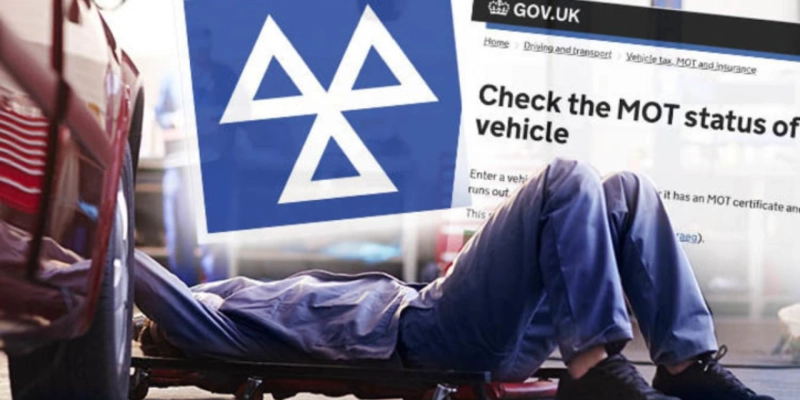When the MOT comes to mind, there are two words found along with it: time-taking and challenging. But it doesn't have to! If you knew every minute of information that could help you pass the MOT test, wouldn't it be easier? Well, we strive to do just that! We provide every piece of information that could help your vehicle ace the test. Not just that, our center provides the best vehicle servicing.
This ensures that your vehicle is in top-notch condition before getting tested for MOT Uxbridge. We realise that the MOT is an important document for your vehicle, and it's not easy to put your trust in all garages. But our team of expert testers is trained and experienced in handling almost every type of vehicle for the MOT. Continue reading to find out more significant information about the MOT.
What is the MOT?
This is the most frequently asked question we get about the MOT. Many vehicle owners are not well-versed with the MOT tests and procedures. In simplest terms, the MOT is a government-specified test that checks your vehicle’s safety standards, emission standards, and overall roadworthiness. This test is compulsory for every vehicle that has crossed the age of 3 years and must be completed every 12 months. When the test was initially introduced in the UK, it consisted of a few basic checks for your vehicle. But now, it has become a comprehensive test that inspects around 20 parts and components of your vehicle.
The MOT was introduced by the Ministry of Transport, which has been abbreviated to form the term MOT. Now known as the Department of Transport, it is responsible for overseeing the transport network of the state, along with controlling vehicle emissions, managing the safety and emission standards and the future of transport, or solving any transport-related security and civil issues.
The status of your vehicle regarding the MOT is reported on the MOT certificate. After 2018, there are 5 reports your vehicle can get. The ‘Passed’ certificate is what you get when your vehicle passes the MOT. This certificate claims that your vehicle has exceeded the standards of safety and emissions, making it roadworthy. This is valid for the next 12 months, after which you will be required to get your vehicle tested again. Besides this, your vehicle can get the ‘Passed with advisory’ report. This means you can drive your car but some issues should be addressed and fixed. If your vehicle fails the MOT, you are given three types of reports, depending on the defects. There are three categories of defects that lead to failure: minor, major, and dangerous defects. If your vehicle fails the MOT, it needs to be retested within the next 10 days. The Driver and Vehicle Standards Agency, also called DVSA, issues these certificates.
For a better understanding, we have listed below the parts usually checked during an MOT. This includes:
- Bonnet: Secure closing.
- Body, vehicle structure, and general items: Corrosion-free and no sharp edges.
- Exhaust emissions and exhaust system: Checks for emission standards.
- Brakes System: Efficiency and performance, anti-lock braking system (ABS), electronic stability control (ESC).
- Fuel system: No leaks, and secure fuel caps.
- Towbars: Secure conditions.
- Seats and seatbelts: Secure attachment of the mandatory seat belts.
- Doors and mirrors: Condition of mirrors; secure latch, hinges, and catches.
- Tyres and wheels: Size, tread depth, type, and overall condition.
- Lights and horns: Proper functioning.
- Windscreen, including wipers and washers: Proper condition and functioning.
- Steering and suspension: Steering oil level, steering lock mechanism, and condition.
- Registration plates: Plate colour and correct format.
- Vehicle Identification Number.
- Electrical wiring and battery: no visible wiring and proper functioning of the battery.
The MOT test, however, excludes testing of the clutch, gearbox, and engine.
What is the process of an MOT?
If you are getting your vehicle tested for MOT for the first time, you need to keep in mind these steps:
- Preliminary Checks: These checks include reviewing your vehicle’s documentation. Prepare all documents related to your vehicle beforehand to avoid hassles.
- Visual Inspection: A few interior and exterior parts of your vehicle are inspected during a visual examination. This includes the vehicle’s lights, tyres, seatbelts, etc.
- Examination: Specialised equipment is used to test your vehicle’s systems, such as emissions, steering and suspension, tyres and brakes, registration plate and number, windscreen, wipers, and horns.
- Results: Depending on the results, your car’s status is decided and reported. In case of failure, a detailed report will be offered with all necessary repairs.
- Certificate: When your vehicle passes the MOT test, a certificate is issued that is valid for 12 months.
- Retests and Appeal: This step is optional and depends on your report. Especially if your vehicle has failed its MOT test. Your vehicle is eligible for the retest within 10 working days. This is free and can be done only after necessary repairs. If you feel your report is inaccurate, you are allowed to appeal to the DVSA. The appeal, however, should be completed before 14 working days from the test.
Making your car’s MOT test easier is our top priority! A test as important as the MOT Uxbridge should not be as challenging as it is. Book your appointment for easy and accurate testing. Experience a smoother-running vehicle and comfortable journeys today!


